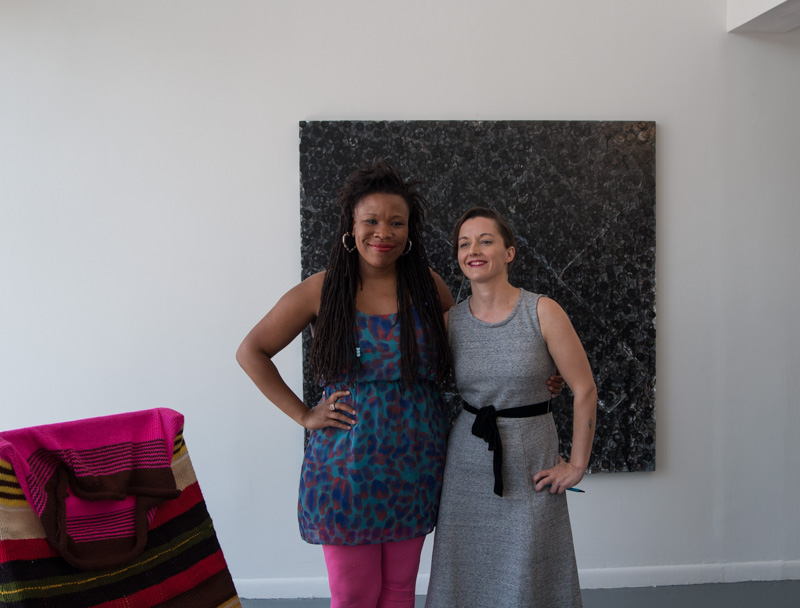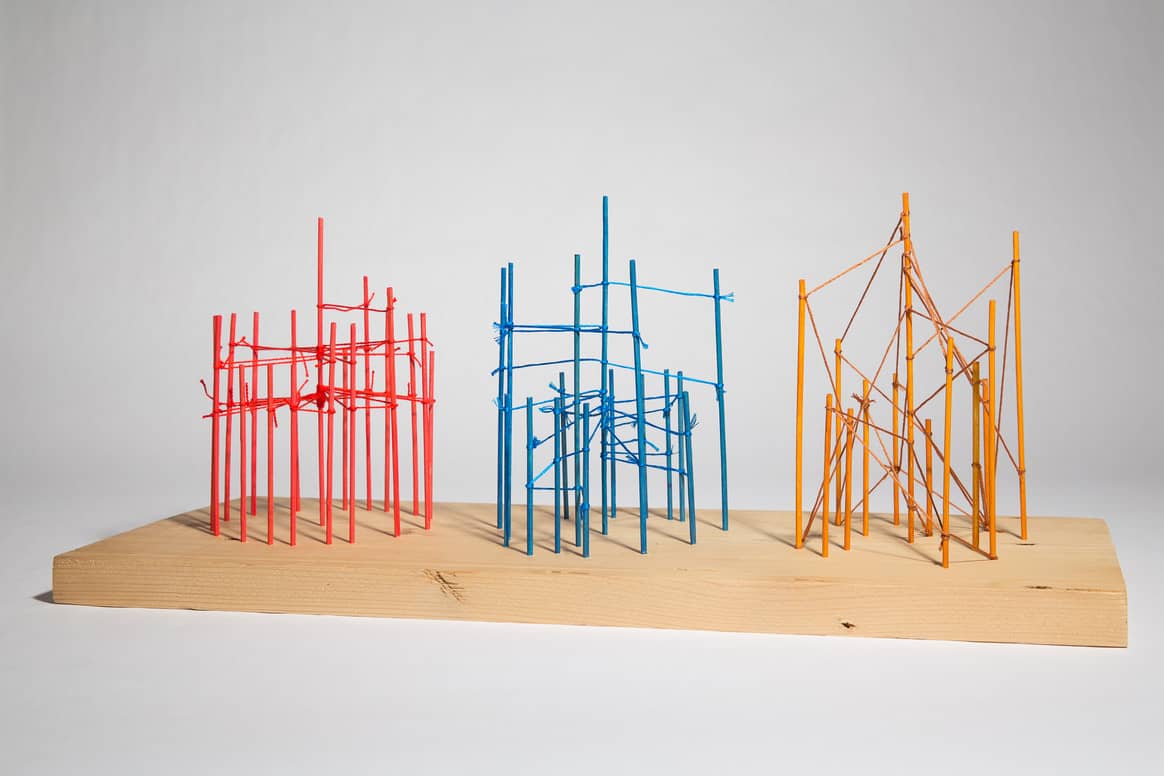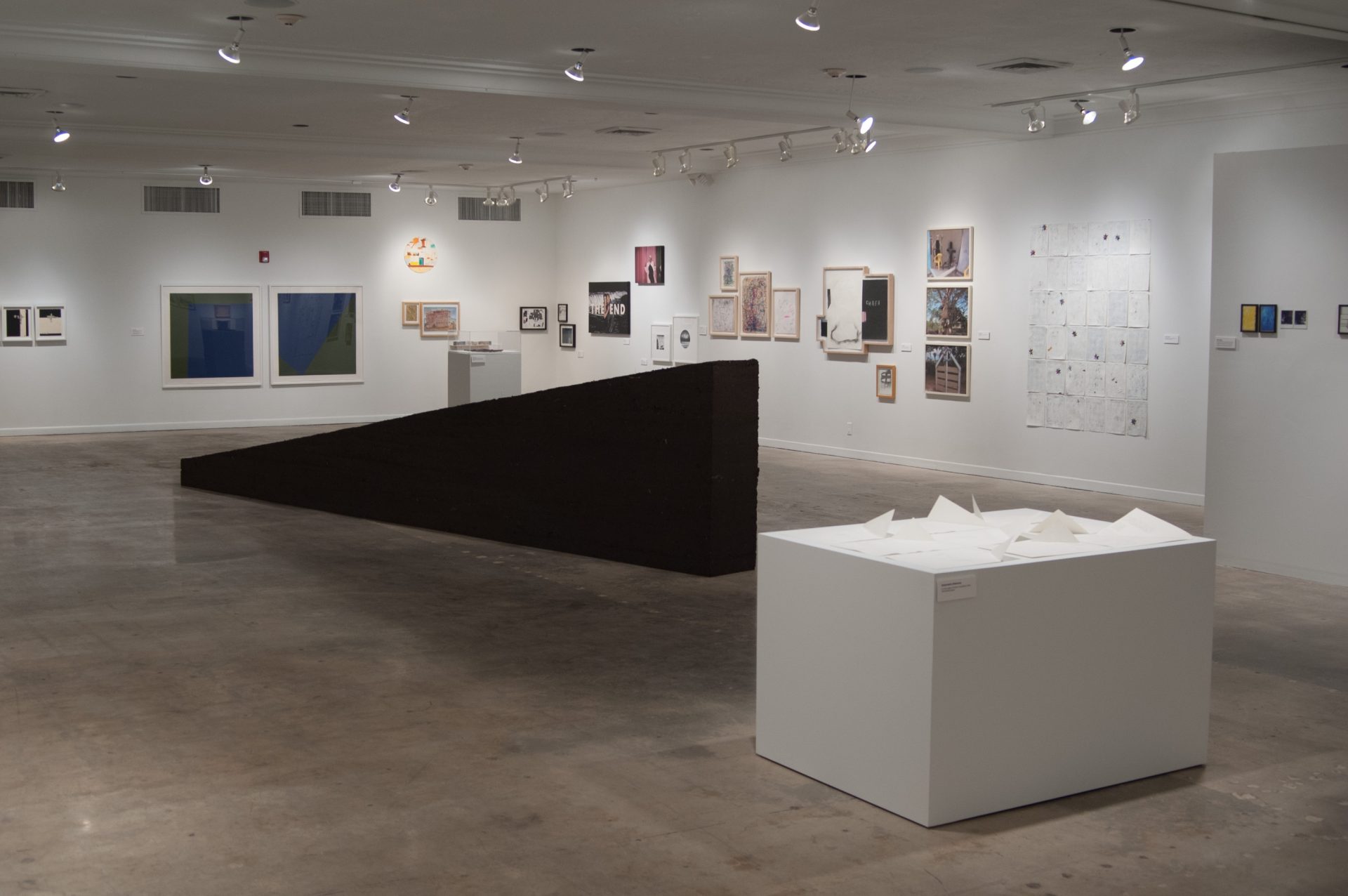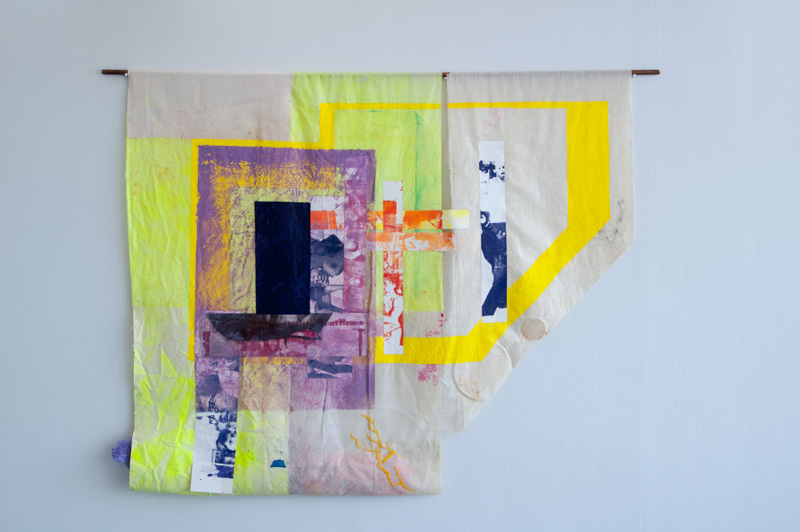Above: Grape Drink Box (Anacostia Los Angeles Topeka McKinney), 2017 mixed media on gauze Courtesy Tilton Gallery.
Photo by Onajide Shabaka.
On Documentary Abstraction at Art Center/South Florida explores the ways contemporary artists are using abstract painting and sculpture to document, discuss and revisualize recent history. Featuring artists Torkwase Dyson, Tomashi Jackson, Richard Ibghy, Marilou Lemmens and others, the works in On Documentary Abstraction examine a range of topics, including the history of lynching in the southern United States, civil rights legislation, and labor exploitation in the 20th century. These revisualizations vary widely in aesthetic and process, from dense configurations to colorful and airy representations, offering the viewer the opportunity to choose what and how much information to take in.
In addition, Art Center/ South Florida has a series of film and lecture programs during the duration of the exhibition. The first conversation took place Saturday, 30 2017, with the artist, Tomashi Jackson and guest curator, Rachael Rakes. Ms. Jackson will also have work in the film series which opens on 22 October 2017.
“The exhibition showcases a group of artists who have created new ways of communicating urgent and complex ideas and facts by deliberately co-prioritizing form and content,” noted curator, Rachael Rakes
“Torkwase Dyson’s works visceral patterned foreground slightly conceals in their background data visualization of the history of systemic violence against Black Americans. Richard Ibghy and Marilou Lemmon’s works transform complex ideas about human labor into simple forms that resemble shapes found in Modern abstract art. In doing so, they document how the aesthetics of facts structure thought and social relations.”
“Tomashi Jackson’s intensely colored multi-media sculptural works are formally rigorous and immediately effective. While many of her works include hints of figuration, these are embedded like afterimages: the referential key to these works is often in their long titles, which mix the names of Civil Rights court cases with contemporary sites of enduring segregation and radicalized oppression.” Rachael Rakes
We can think and question how abstraction can reflect, or refer to things we know are concrete. But, we have centuries of evidence to say that it can do just that. During her conversation, Ms. Jackson went into more detail about her practice.

Above: Tomashi Jackson and Rachael Rakes. Photo by Onajide Shabaka.
“While studying painting and printmaking at Yale University, Tomashi Jackson noticed that the language Josef Albers used to describe color perception phenomenon, in his 1963 instructional text Interaction of Color, mirrored the language of racialized segregation found in the transcripts of education policy and civil rights court cases fought by Thurgood Marshall and the NAACP Legal Defense and Educational Fund (LDF). The discovery led Jackson to use the properties of color perception as an aesthetic strategy for investigating the history of American school desegregation and the contemporary resegregation of public space. The results are large-scale abstract works that connect past and present, formalism and intuition, languages of color theory and human rights legislation,” in conversation with Risa Puleo.
“Transcripts [from Brown v. Board of Education] illustrate the absurdist nature of American racism as it dictates social policies then and now. I recognized terms about how “colors” interact from Albers’s text: colored, boundaries, movement, transparency, mixture, purity, restriction, deception, memory, transformation, instrumentation, systems, recognition, psychic effect, placement, quality, and value. The language around de jure segregation is similar to Albers’s description of the wrong way to perceive color as if color is static,” Tomashi Jackson informs us.
Although language is not “seen” in the way, we visually perceive visual art, language is concerned as the primary way in which people communicate with each other. It is “a system of symbols that can be strung together in an infinite number of ways for the purpose of communicating abstract thought” (Henslin 2004: 40).
No one knows language from birth. It is learned from those who raise a newborn and gave him/her an impulse to talk (Jandt, 1995: 93). Language conceptualizes the world of humans and provides the categories in which humans think. The thought is shaped by language.

Above: 3 sculptures: Richard Ibghy & Marilou Lemmens, The Career Trajectories of Three BigCo Employees – Sheryl – Bill – Kellie (2016-ongoing), From the series “Each Number Equals One Inhalation and One Exhalation,” Wood, string, metal, plastic and acetate, 8.25 x 20 x 7.5 inches. Courtesy of Jane Lombard Gallery and the artists.
“The usual focus in the language realm is on lexicon (e.g., color terms) or on grammatical categories (e.g., number marking) – the aspects of language that code meaning values,” John A. Lucy outlines in his 1997 work. In examining Jackson’s paintings, three-dimensional structures of varying layers, densities, materials, and media, there is language that expresses the culture’s mentality and consciousness. This leads directly to Edward Sapir’s assumptions on language, namely that “language is a medium of expression of our society.”
Tomashi Jackson was born in Houston, Texas and raised in Los Angeles, California. Ms. Jackson is currently based in New York City and the Greater Boston area. She holds an MFA in Painting and Printmaking from the Yale School of Art. She earned a degree of Science Master of Art, Culture, and Technology from the M.I.T. School of Architecture and Planning in 2012. She earned her BFA from the Cooper Union School of Art in 2010.
ArtCenter South Florida Studios: 924 Lincoln Road
Office: 924 Lincoln Road, Suite 205 | Miami Beach, FL 33139

